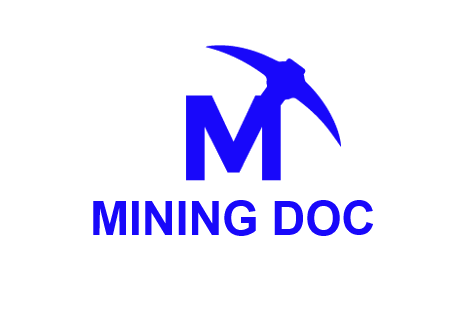Introduction
Selection of blast pattern is a very important task in mining activities. The selection is made considering many effective factors; hence, there is a significant variation in the selected pattern from mine to mine. The most influential factors are annual mine production, required rock fragmentation, geological and geotechnical characteristics of the area, physico-mechanical properties of surrounding rocks, and ground water condition (Monjezi et al., 2011).
The blast parameters should be determined in such a way that the entire mining process is rather technically and economically performed. Otherwise, the explosive energy would not be fully consumed favourably in rock fragmentation and displacement. In this way, a considerable amount of the energy is exhausted in the form of unwanted damaging phenomena such as backbreak and flyrock (Singh & Singh, 2005).
What are the effects of Flyrock?
Equipment Damage
Near the blast site, machinery, cars, and other equipment may sustain damage by flyrock. These projectiles have the potential to cause major delays in mining or quarrying operations, as well as severe downtime and repair expenses.
Structural Damage
Flyrock can cause significant damage, such as structural weakening, broken windows, or even the collapse of unstable structures, if it gets close to structures like buildings, infrastructure, or utilities.
Personnel Safety
Flyrock pieces have a high speed and erratic trajectory that can result in fatalities or major injuries to anyone they strike. Thus, reducing the chance of flyrock is essential to accomplishing safer blasting operations. This can pose a significant risk towards the health and safety of employees or persons within the vicinity of the mine (van der Walt & Spiteri, 2020).
What mitigation measures should be taken?
A number of important steps can be taken to reduce the risks that come with blasting flyrock. These include maximising blast design, creating clearing zones, following rules, supervising and managing blasts, educating staff, increasing public awareness, and improving communication in general.
Blast Design Optimisation
To minimise flyrock hazards, engineers must optimise blast parameters, such as explosive type, charge weight, timing, and stemming. By using RES techniques and historical data, engineers can analyse the impact of these parameters on the overall blast outcome, which allows them to refine and optimise the design. Engineers can reduce the likelihood of flyrock occurrences significantly by carefully considering factors such as geology, rock properties, and confinement conditions.
Blast Monitoring and Control
The use of real-time blast monitoring devices, such as seismographs, acoustic sensors, and high-speed cameras, enables prompt feedback and management of blasting activities. By identifying any departures from the planned blast design, monitoring enables quick corrections to stop flyrock occurrences.
Blast Personnel Training
Ensuring safe and responsible blasting activities requires providing blasting professionals with adequate training. This entails instructing them on appropriate blast design, loading methods, stemming protocols, rules and laws, and the application of safety precautions to reduce flyrock hazards.
Exclusion/Clearance Zones
To help prevent unauthorised personnel from entering potentially hazardous areas, exclusion/clearance zones should be established around the blast site and communicated to all personnel in a way that ensures their safety. The mine should carry out a comprehensive risk assessment and use tools like max flyrock throw prediction models to help determine the optimal clearance distance.
Public Awareness and Communication
Keeping lines of communication open with stakeholders and neighbouring communities is crucial to spreading knowledge about the possible risks associated with flyrock. Fostering understanding and cooperation is facilitated by sharing blast schedules, having regular communication, and resolving concerns (Understanding The Risks of Flyrock in Mine and Quarry Blasting, 2023).
Conclusion
In summary, blasting operations in mine and quarrying operations are essential for removing important materials from the Earth’s crust, but they also carry a high risk, especially when flyrock is present. Flyrock, or propelled rock fragments that cross the designated clearance zone, is a major risk to people, property, and surrounding structures. An extensive examination of flyrock has been given in this article, along with information on its causes, consequences, and the need of taking precautionary steps to reduce hazards.
Bibliography
Monjezi, M., Amini Khoshalan, H., & Yazdian Varjani, A. (2011). Optimization of Open pit Blast Parameters using Genetic Algorithm. International Journal of Rock Mechanics and Mining Sciences, 48(5), 864–869. https://doi.org/10.1016/j.ijrmms.2011.04.005
Singh, T., & Singh, V. (2005). An intelligent approach to prediction and control ground vibration in mines. Geotechnical & Geological Engineering, 23. https://doi.org/10.1007/s10706-004-7068-x
Understanding The Risks of Flyrock in Mine and Quarry Blasting. (2023, November 14). https://ergindustrial.com/understanding-and-minimizing-the-risks-of-flyrock-in-mine-and-quarry-blasting/
van der Walt, J., & Spiteri, W. (2020). A critical analysis of recent research into the prediction of flyrock and related issues resulting from surface blasting activities. Journal of the Southern African Institute of Mining and Metallurgy, 120, 701–714. https://doi.org/10.17159/2411-9717/1103/2020
AI generated picture.







